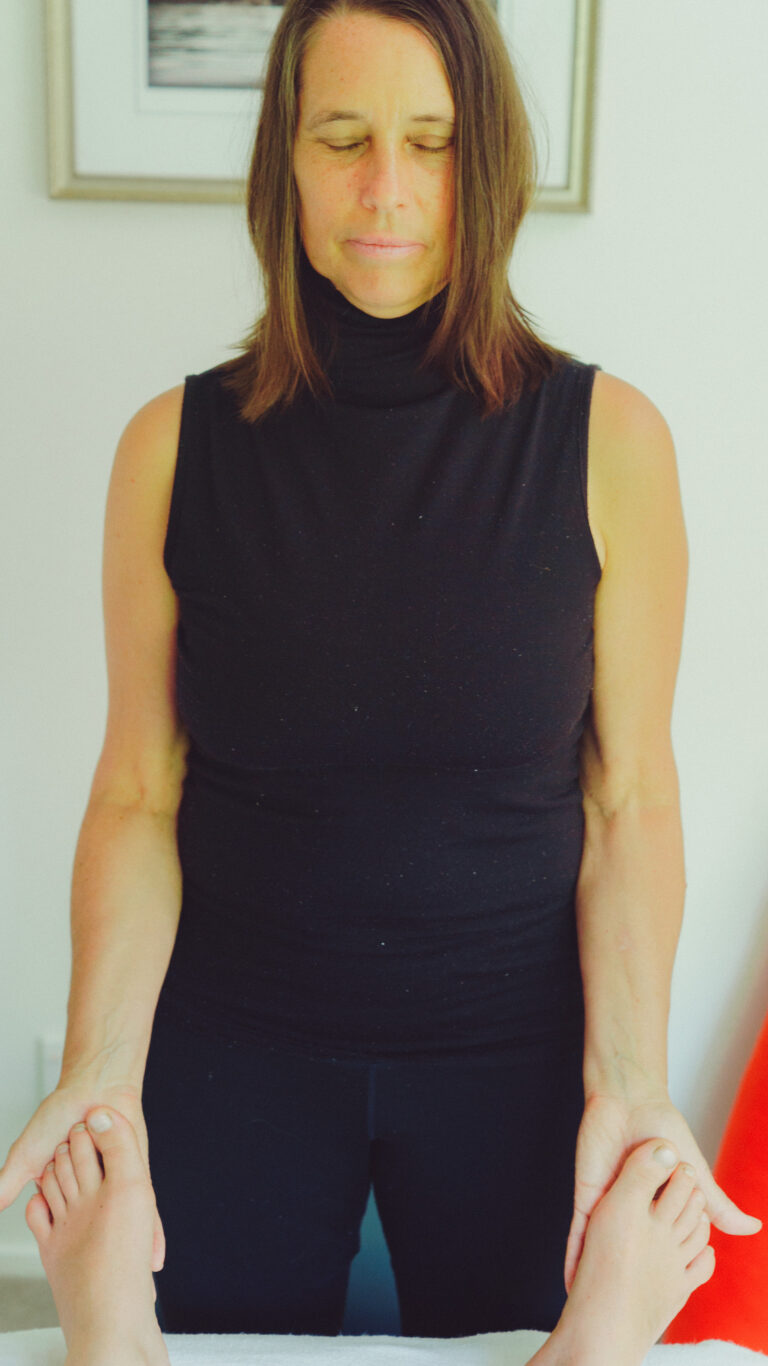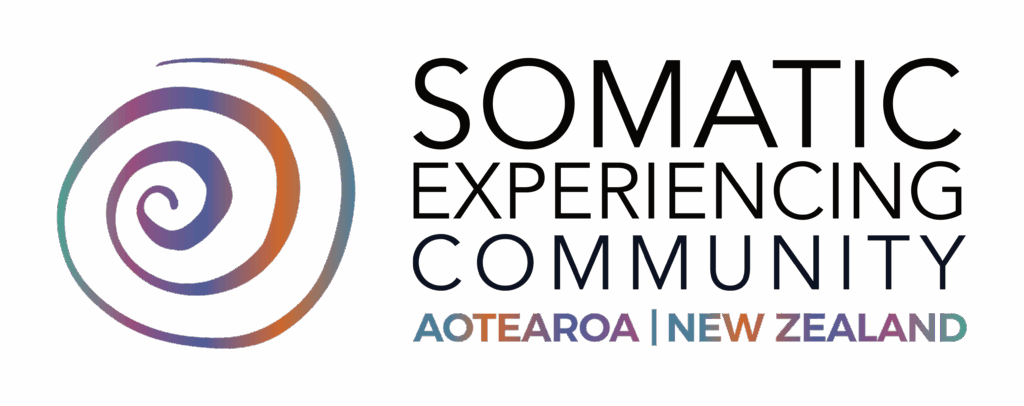Home » The Power of Touch: Using Somatic Experiencing® to Work with Trauma
Article Author: Julie Teetsov, PH.D, SEP, CST
“Touch, when administered with attunement and sensitivity, can help bring a person out of dissociation and back into the body. It can reestablish boundaries, restore a sense of safety, and support the completion of thwarted defensive responses.”
Peter Levine, In an Unspoken Voice: How the Body Releases Trauma and Restores Goodness
When Judy was referred to me by her mental health practitioner, she’d been suffering with IBS for as long as she could remember. Judy had a physical job and even though she was eating well, she couldn’t maintain her body weight and was struggling to keep up at work.
Before we could begin, it was important to establish a relationship of consent for touch work. We agreed that she would let me know if she was uncomfortable at any time and I would stop.
When Judy lay down on the table, her muscles were so highly braced that it was as if her whole body was on guard, watching out for danger. I asked where her body might want to receive support with touch, and she said she didn’t know. I asked if she would be okay with bringing my hand to her belly. It felt as if I was touching a cold slab of steel, but within minutes, I began to sense softening and warmth. What surprised both of us, was how willing her belly was to be in conversation with her and with my hand.

As a trauma-informed touch practitioner and movement educator, I see many adult clients like Judy.
These clients come to me with chronic symptoms in their gut, bladder, chest, or throat area. They come with complex pain syndromes, neurological symptoms, chronic fatigue or autonomic symptoms such as POTS, hot or cold sweats or nausea. In many cases they’ve exhausted conventional medical treatments, but the symptoms have not resolved and cannot be explained.
Often these clients are aware of the connection between early developmental trauma and their symptoms. Some were placed in an incubator as infants and deprived of touch in their early days. Others experienced childhood medical procedures, a form of touch that was interpreted by their young and often pre-verbal selves, as dangerous and painful. Other clients experienced abuse or neglect, experiencing harmful touch or the absence of nurturing touch.
Researchers learn more every year about how and why touch, a baby’s first sensation, is so vital to an infant’s survival and healthy development.
Nurturing touch affects the development of a child’s identity and sets the trajectory for the development of a resilient sense of self into adulthood. The absence of touch, or touch that is harmful creates a learned trauma response where the infant must adopt what we call a freeze or immobility-dominant trauma physiology. Talk therapy alone cannot help the adult client access these pre-verbal learned trauma responses. Touch is one of the only ways to replace a developmental trauma response with a sense of safety and belonging to one’s body.
While I have trained in many different touch and movement modalities, it wasn’t until I did my 3-year professional training with Somatic Experiencing® that I understood how to support my clients to resolve their trauma physiology. Somatic Experiencing® taught me how to notice the markers of trauma, as well as how to support clients to notice their trauma responses, and slowly and gently find ways to re-pattern their nervous system’s response to past experiences.
Somatic Experiencing® teaches the practitioner to help clients resolve trapped survival energy by using the language of the body. Using touch and movement, we can dialogue with very young somatic memories of terror and rage, and bring a sense of repair by creating new somatic memories of feeling safe, seen, loved and nourished.
Judy had grown up in a refugee camp. The bracing in her gut and her whole body when she lay on the table, was her nervous system’s response to hypervigilance, a consequence of having to fight for her survival on a daily basis during her formative years.
Over several sessions, we continued to use intentional touch and dialogue to release Judy’s trapped survival energy. Judy learned how to listen to the language of her body, experiencing gentle trembling, warmth and enhanced mobility and softening in her viscera. As her gut changed from cold steel to warm pliability, I knew we were moving in the direction of the survival energy leaving her body.

Gradually, Judy came back into a relationship with her whole body. As fragments of forgotten memories arose, I encouraged Judy to work with her talk therapist and she began to process these aspects of her past. Having access to both touch and talk therapy was a powerful combination for Judy’s healing journey. She began to put on weight, she was able to retain her job and before long, she had a newfound confidence and trust in the wisdom of her body. She reported feeling more grounded and settled, as if she had an expanded sense of self.

Developmental trauma is not the only reason people seek trauma-informed touch support.
Some come with trapped survival energy as a result of sexual trauma, medical trauma or motor vehicle accidents. Touch helps us regulate our nervous systems by restoring a sense of safe connection, helping us ground and come back into relationship with our felt sense in the present moment. Touch supports us to build our overall body awareness and specifically our interoception – the ability to feel internal sensations – which is important for emotional regulation and self-understanding.
As a body worker, Somatic Experiencing® offers a simple and effective way to work collaboratively with your clients on the table. You can incorporate the principles and models of Somatic Experiencing® into whatever touch modality you currently practice, so you can identify and work with unresolved survival movements.
One of the best ways to find out more about Somatic Experiencing® is to schedule a personal session or a consultation with one of the trained Somatic Experiencing® practitioners (SEPs) in New Zealand.
Somatic Experiencing® is a relatively new modality in Aotearoa, so it can be challenging to find someone in your location to have an in-person session. Luckily, you can also experience Somatic Experiencing® online using self-touch or long-distance touch practices. Using our SE Aotearoa practitioner directory, I trust you can find a practitioner to work with either in person or online.
*Judy’s name and other identifying details have been changed to protect her privacy.
